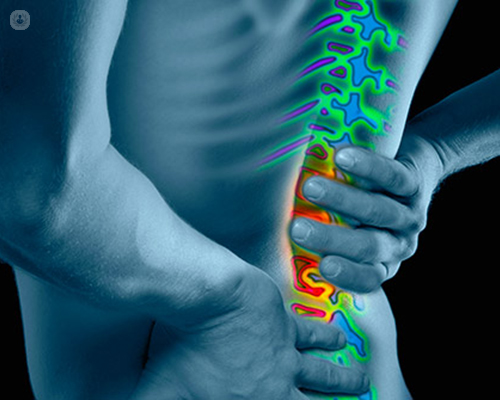Slipped disc – what are the causes and symptoms, and how is it treated?
Autore:The intervertebral discs within the spine are the shock-absorbing pads between the bones that cushion the bones and reduce the chances of damage from impact. A slipped disc is when one of these discs splits or becomes ruptured, and the shock-absorbing gel escapes into the surrounding tissue. The disc doesn’t actually ‘slip’ as the name suggests. When the substance leaks from the disc, it can put pressure on the spinal cord or on individual nerves in the spine, causing pain around the disc, or in the area surrounding the disc. The condition is also known as herniated disc, ruptured disc, prolapsed disc, or more commonly ‘slipped disc’.

What causes a slipped disc?
More than 20% of the population has a slipped disc with no pain or symptoms. However, in some the condition can cause a lot of pain.
Usually the most affected area is the lower back, but any of the discs in the spine, including those in the neck, can rupture. It is usually caused by degeneration due to aging, due to trauma, or because of a genetic predisposition. The soft part of the disc leaks out of the thicker covering and begins to swell. The surrounding area then becomes inflamed and can cause severe pain.
One of the most common causes of a slipped disc is from hard physical labour or from heavy lifting in the incorrect way, or without back support. Trauma or injury from a fall or an accident can also cause a slipped disc.
A slipped disc caused by degeneration is more prominent in people aged between 30 and 50 years of age. Slipped discs in the neck are more common in people aged between 40 and 60.
What are the symptoms of a slipped disc?
The actual slipped disc is symptom free, with the pain caused by inflammation from the pressure on the nerve roots, the spinal cord, and on the cauda equina.
-
Nerve root pressure symptoms
Symptoms of pressure on the nerve root include numbness or paralysis of single muscles, pain radiating outwards to the arms and the legs, or a tingling feeling occurring in the limbs. -
Spinal cord pressure symptoms
Common symptoms of pressure on the spinal cord include muscle spasms, paralysis in the lower part of the body below the point of pressure in the spinal cord, for example pressure on the spinal cord in the chest area will cause pain lower limbs, but not in the upper limbs. -
Cauda equina pressure symptoms
Pressure on the cauda equine, within the lumbar region (lower back) causes paralysis of both legs, loss of bladder control, and a disturbance of feeling in the rectum area or on the inside of the thighs.
Treatment of slipped disc Treatment for a slipped disc is usually conservative, and usually involves rest, painkilling medication, steroid injection to reduce inflammation, and possibly muscle relaxant. Physiotherapy may also be prescribed. If the conservative methods are not successful, the doctor may request an MRI scan of the affected area, and in some rare cases surgery may be required.
If you are suffering with back pain that could be related to a slipped disc, make an appointment with a specialist here.



